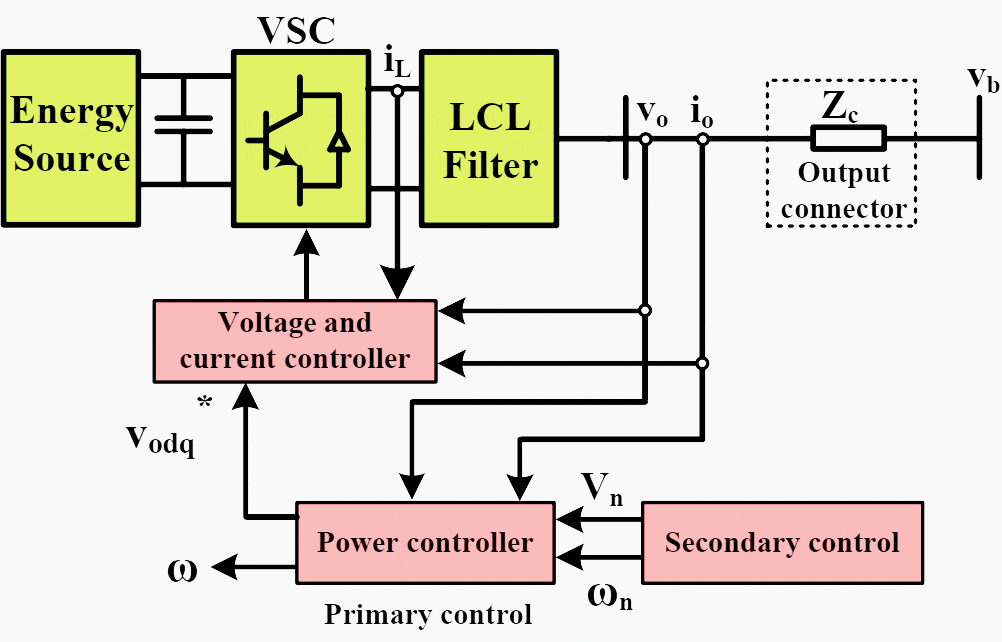Microgrid operation of DGs
Distributed Generation can potentially increase the distribution system reliability and provide additional technical and economical benefits by allowing intentional islanding or so called micro-grid operation of DGs. The current IEEE Standards (old IEEE 929 and new IEEE 1547) and UL 1741 do not address this issue but consider it as one of the tasks to be addressed in future revisions.

Currently, there is a rich and growing literature in this area. Many countries are trying to meet the targets set in the Kyoto Protocol to reduce greenhouse gas emissions. DG provides an attractive option to accomplish this task.
Besides environmental benefits, technical and economical benefits could be gained by allowing micro-grid operation of DGs. Performing intentional islanding or microgrid operation of DGs can improve the power system service quality and increase the power system reliability.
In some cases, expanding traditional centralized generating systems maybe so tight and it might be expected that it will not be capable of meeting future electricity demand growth at acceptable cost. In this case DGs provide a valuable solution to this problem by grouping DGs with loads in a semi-autonomous neighborhood that could be termed as Microgrid.
Allowing the DG to operate during an islanding situation could potentially bring economical benefits to the DG owner, Distribution Network Operator and the customer.
Despite the many advantages that could be gained from DG islanded operation, many challenges and technical issues constraint its operation. For safe and efficient operation of micro-grids, these challenges must be addressed and well established. One of the major challenges, that is of main focus in this work, is distribution system protection.
- DG Islanding
- Intentional Islanding (Micro-grid)
- Islanded Operation Protection Issues
- Loss of Coordination and Sensitivity
- Nuisance fuse blowing
- Fault Back-feed During Island Operation (Bi-directionality)
- Summary
1. DG Islanding
In general, islanding is a condition in which a DG is operating isolated from the utility. This scenario could occur during a utility outage. The current IEEE standards necessitate the disconnection of the DG during a utility outage.
Thus, a DG is usually equipped with an islanding detection method responsible for disconnecting the DG once an islanded condition occurs.
Islanding detection methods can be divided into three main groups:
- Communication based methods,
- Passive methods, and
- Active methods.
Communication based methods mainly depend on transmitting signals to and from the utility and DG sides. These methods are considered much more expensive than passive and active methods. Passive methods depend on monitoring a certain parameter and comparing it with a threshold value. Once the parameter exceeds the threshold, an islanding condition is declared.
Figure 1 shows an islanded situation where the utility switch opens and the DG operates independently, feeding an RLC load.


2. Intentional Islanding (Micro-grid)
With the increasing penetration of DG in the distribution system, intentional islanded operation becomes an attractive option. Intentional islanding offer the potential to maximise the level of generation that can be connected at the lower voltage levels of the distribution network and at the same time provide consumers with improved levels of supply security.
A microgrid can be temporarily operated in an intentional islanded mode in response to significant disturbances within the upstream grid system (e.g. outage of circuits or power quality disturbances).
The potential DG candidates for islanded operation are the synchronous and inverter based DG. The only means by which an asynchronous DG can support the voltage on an island is by self-excitation and in such cases voltage control becomes a challenging issue.
3. Islanded Operation Protection Issues
Under normal interconnected operation, the network will have a coordinated scheme of protection. This scheme will be arranged to clear faults in a manner that the minimum number of customers is disconnected. Such a scheme will almost certainly be making full use of the range of fault levels on the network to optimize the discrimination between protective devices on a circuit.
When a DG island is created, it is required that any faults occurring will be cleared quickly to minimize damage or danger to personnel. However, the fault contribution of the DG will be significantly lower than that of the interconnected network.
Since fault currents in the islanded region might change, this can cause mis-operation of the currently installed protective devices. Most of the distribution system protection is based on sensing the current.
Inverter based DGs (Figure 2) do not provide the levels of short circuit current sufficient to operate current sensing protective devices such as overcurrent relays. The tripping range of the relays has to guarantee the same selectivity as in parallel operation.
Yet, there is a need to assure that the protection scheme designed is operating in a fast, selective and reliable manner for both grid and islanded operation.


Due to the small contribution of inverter based DGs during a fault, there are two concerns to discuss.
The first concern is that fuses and relays that depend on large fault currents to operate, will not be capable of operating during micro-grid operation. The second concern is that if the protective relays were designed for small fault currents to satisfy the micro-grid operation, nuisance tripping could occur due to motor operations.
Islanding is becoming a hot topic and this is due to the increasing penetration of the DG in the system. In order to perform intentional islanding, the DG paralleling switchgear or interface control must be capable of maintaining both the voltage and frequency levels within the standard permissible levels.
Protection coordination practices in distribution systems with distributed generation
4. Loss of Coordination and Sensitivity
The Short circuit current levels passing through the protective devices will be different than those flowing during grid connected operation. Depending on the capacity of the DG and the DG technology, the short circuit levels could be either sufficient to operate the protective devices and could be too small to operate the protective devices and thus coordination would be affected.
The DG is located at different points on the system and its capacity is varied in order to satisfy the following:
- Intentional islanding with a DG capacity greater than the island load.
- Intentional islanding with a DG capacity approximately equal to the island load.
- Intentional islanding with a DG capacity less than the island load.
5. Nuisance fuse blowing
The change in fault currents during an islanded condition could have an impact on recloser-fuse (fuse saving scheme) operation. Depending on the fault current values as well as the coordination curves (whether there are any overlapping or intersection), nuisance fuse tripping could occur as well as coordination failure.
Learn more about basic stand-alone application of reclosers:
6. Fault Back-feed During Island Operation (Bi-directionality)
Intentional islanding of DG could lead to fault currents flowing in reverse directions through the protective devices. This will depend on the system configuration. For example, this could occur if a DG is located on a feeder and is designed to feed an adjacent feeder. Any fault on the adjacent feeder will lead to reverse fault currents passing through some of the protective relays.
Similarly, reverse fault current could occur if there are more than one DG on the island. The DG is connected to the system and fault current flow is determined through the protective devices.
7. Summary
The above results indicate that the islanding scenario is very complex and requires comprehensive studies to determine the necessary settings and changes needed for healthy islanded operation. In fact, the protection philosophy for islanded systems will be different.
Therefore, two separate approaches might be needed to address the parallel and islanded modes of operation, respectively.
Based on the two approaches, some impacts can be mitigated by component upgrade, whereas other impacts can be addressed by utilizing microprocessor relays and communication-based protection practices to yield an adaptive protection scheme that can fit both modes of operations.
Source: Protection Coordination Planning With Distributed Generation by Dr. Tarek K. Abdel-Galil, Ahmed E.B. Abu-Elanien, Eng., Dr. Ehab F. El-Saadany, Dr. Adly Girgis, Yasser A.-R. I. Mohamed, Eng., Dr. Magdy M. A. Salama, Dr. Hatem H. M. Zeineldin at Qualsys Engco. Inc.











How to know about DG?